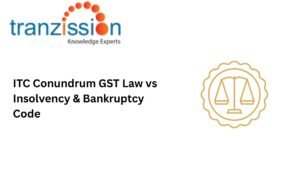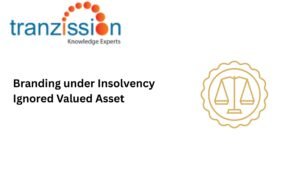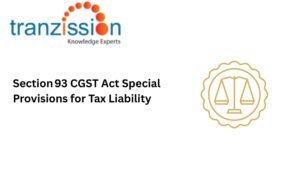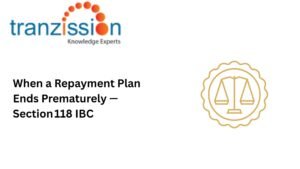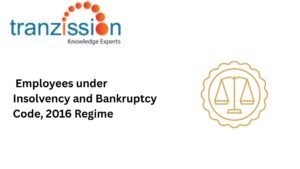
Doctrine of Commercial Wisdom of CoC
Table of Contents
The enactment of the Insolvency and Bankruptcy Code, 2016 (the IBC) is a revolutionary legislation in insolvency law. The role of the Committee of Creditors (CoC) is crucial in the resolution process as it decides the revival or liquidation of corporate debtors. The Doctrine of Commercial Wisdom of CoC importance is underscored through landmark judgments, emphasising their expertise in navigating the complexity of insolvency matters. The judicial importance of CoC’s commercial wisdom has been scrutinised, regarding its place in the insolvency framework in India.
What is the Doctrine of Commercial Wisdom of CoC?
Before going into the judicial review of the doctrine on commercial wisdom, it is important to know what “commercial wisdom” is and its relation in the IBC:
The Doctrine of Commercial Wisdom of CoC grants decision-making authority to the CoC in insolvency cases, allowing creditors to assess and approve the resolution plan based on business feasibility and financial outcomes. The decisions of the CoC should be in the interests of all stakeholders, avoid making any decisions that conflict the interests of other stakeholders, and reflect the collective good rather than personal interest.
Legislative Backing:
Section 30(4) of the IBC empowers the Doctrine of Commercial Wisdom of CoC to make decisions based on their judgment with limited judicial intervention. This allows them to approve the resolution plan without excessive court interference, provided it does not violate any existing laws. This section emphasises the primacy of the CoC’s decision in the corporate insolvency resolution process (CIRP).
Key Elements of Commercial Wisdom
Through judicial precedents, there are certain elements of the Doctrine of Commercial Wisdom of CoC, regarding their decision-making power, the extent of judicial interference in their decisions, and the treatment of the stakeholders:
Decision-Making by the CoC:
As per the IBC provisions, the decisions made by the Doctrine of Commercial Wisdom of CoC must reflect a proper evaluation of the corporate debtor’s financial viability and operational feasibility. The resolution plan must be approved by 66% of the members of the CoC and include equitable treatment of creditors.
Limited Judicial Interference:
The National Company Law Tribunal (NCLT) avoids reviewing the commercial aspects of CoC decisions, focusing only on procedural compliance and legal validity. This reduces the burden on the NCLT and ensures that CIRP is completed within the time limit of the IBC.
Balancing Equity and Feasibility:
The CoC has to manage multiple stakeholders simultaneously to make any decision in the CIRP. As per the doctrine of commercial wisdom, any decision made by the CoC and to form the resolution plan, it necessary to ensure fair treatment of all stakeholders while considering the best interests of creditors.
Read more : Functions of Insolvency Professional Agencies in India
Judicial Trends on Commercial Wisdom
In the Essar Steel Case, the Hon’ble Supreme Court, affirmed the supremacy of the CoC’s commercial wisdom while emphasizing equitable treatment of creditors. The court also underscores that NCLT must operate within the jurisdiction boundaries set by the IBC while emphasising that these bodies should adhere to the provisions outlined in section 30(2) of the IBC. Further, the Jaypee Infratech case highlighted the need for transparency and fairness in CoC decision-making.
Scope of Judicial Review
The NCLT has limited power of judicial review as the courts examine procedural lapses, adherence to IBC provisions, and instances of bad faith. The NCLT will only interfere with the decisions of the CoC if there is clear evidence of procedural irregularities, fraud, or blatant violation of the law, as per the grounds under the IBC.
Read more : Addressing Grievances and Complaints under IBC
Challenges and Controversies
Equitable Treatment of Creditors:
Although it is necessary for the CoC’s decision to treat all creditors equally, practically this may not be so. Dissenting financial creditors and operational creditors often raise concerns about unequal treatment in resolution plans.
Balancing Speed with Fairness:
The IBC aims to resolve the financial struggles of the corporate debtor within a 330-day limit from the date of the admission of the application for initiating CIRP. However, with the importance of commercial decisions of the CoC, alongside the complexity of insolvency matters and handling numerous stakeholders at once, there may be aggrieved stakeholders who are not satisfied with the CoC’s decision. These disputes often delay the resolution process.
Judicial Overreach vs. Judicial Safeguard:
There is a thin line between necessary judicial oversight and undue interference remains a contentious issue.
Evolving Scope of Judicial Interference
Rethinking the Doctrine:
The doctrine of commercial wisdom needs to be rethought because it may lead to potential issues such as lack of transparency, unfair treatment of certain creditors, and potential abuse of powers. The courts are increasingly scrutinizing CoC decisions in light of certain principles, particularly fairness, transparency, and equitable treatment.
Recent Trends:
There has been an increase in judicial interventions in cases involving operational creditors and minority dissenting creditors, addressing the issue of unfair treatment during the resolution process. Judicial review addresses many legal gaps in the current framework of the decision-making power of the CoC.
Implications for Insolvency Professionals:
The CoC consists of financial creditors, which means that operational creditors have little ability to claim their dues. Insolvency professionals may face challenges to their integrity and objectivity if they are pressured by other parties, such as the financial creditors. Complying with the essence of insolvency laws may become difficult for insolvency professionals and the need to align resolution plans with principles of equity, all while adhering to CoC’s decisions.
Role of Insolvency Professionals
Insolvency professionals have an important role in managing the corporate debtor during the resolution process. It is important to adhere to provisions and timelines to avoid unnecessary judicial scrutiny and balance the expectations of financial creditors, operational creditors, and other stakeholders. They also provide their expertise in facilitating the resolution process that prioritises the most commercially viable option for a distressed company. This allows the CoC to make informed decisions while upholding the principle of maximising creditor recovery.
Conclusion : Doctrine of Commercial Wisdom of CoC
The doctrine of commercial wisdom is central to the CIRP process, empowering creditors while limiting judicial interference. It gives the CoC significant autonomy and discretion in the insolvency resolution process. The rationale behind this doctrine is that creditors are directly impacted by the company’s financial health, and are the best parties to decide how to proceed with the resolution process. However, it has been recognised that it could potentially lead to a lack of transparency or unfair treatment of certain stakeholders if the CoC does not exercise its power judiciously. Therefore there is a need to further enhance the doctrine of commercial wisdom to tackle such issues.
Frequently Asked Questions (FAQs)
1. What is the role of commercial wisdom in the IBC?
Commercial wisdom refers to the power granted to the CoC to make crucial decisions regarding a distressed company’s insolvency resolution process. It allows the CoC to make commercially sound decisions without excessive judicial intervention as long as they act in good faith and within the IBC framework.
2. Can courts challenge CoC decisions under commercial wisdom?
Yes, the courts can challenge the commercial wisdom of the CoC if it conflicts with the requirements of the IBC, such as irregularity or fraud as per section 61(4).
3. What challenges do insolvency professionals face under the doctrine?
Because of the doctrine of commercial wisdom, insolvency professionals face challenges such as a lack of transparency, unfair treatment of certain creditors, and potential abuse of powers by the CoC.

